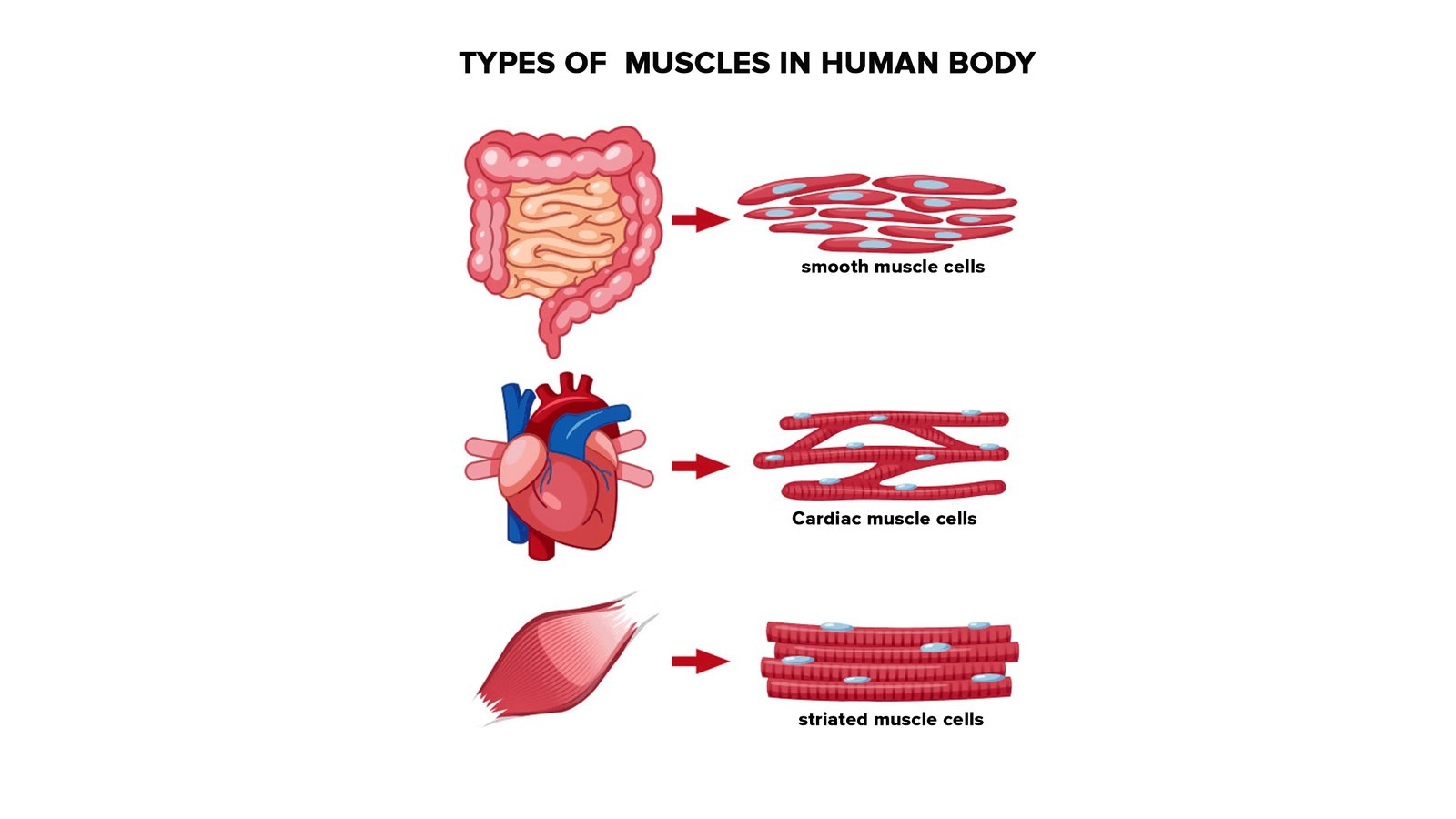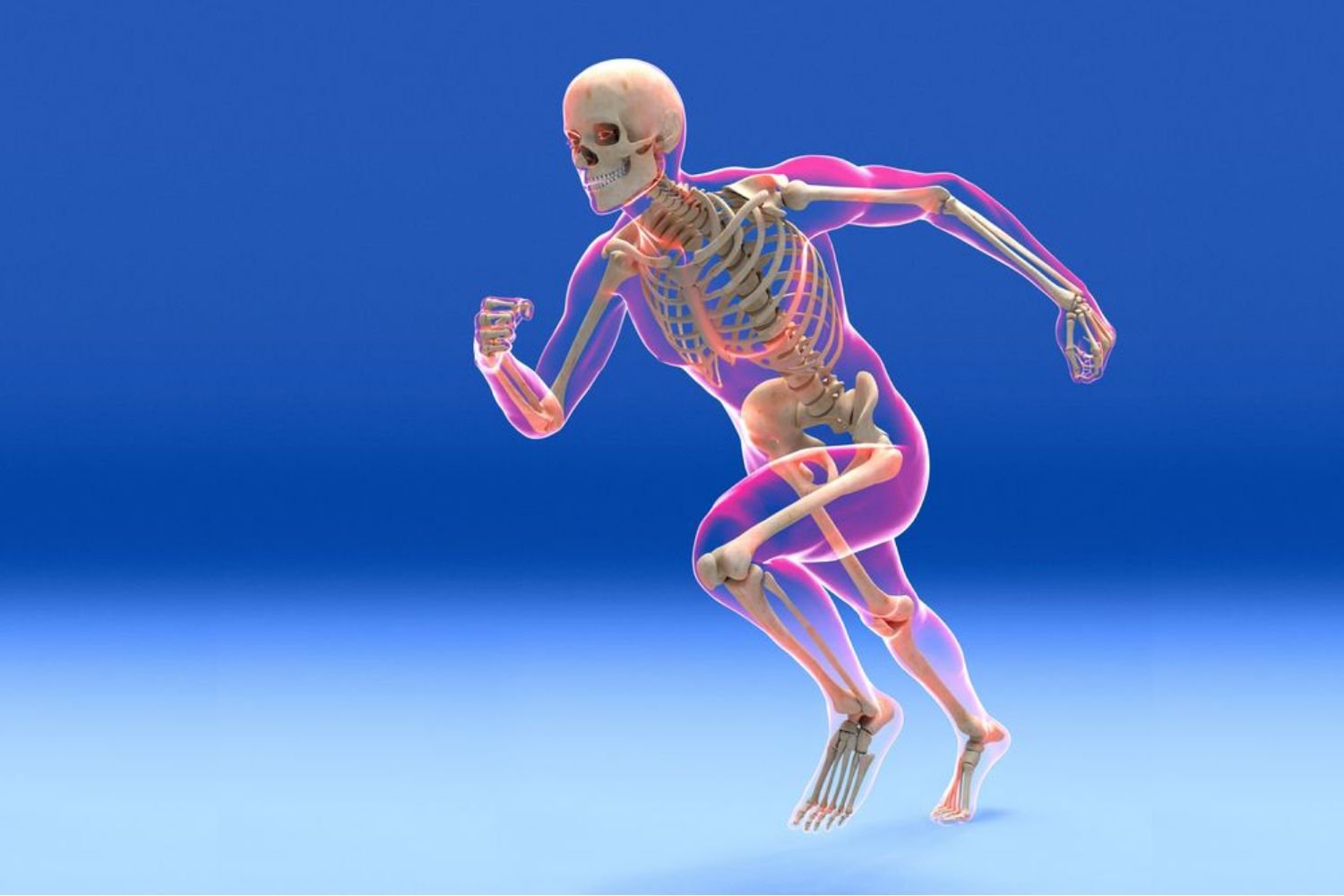Introduction of Muscle tissue – The course is designed for the basic understanding of anatomical structures and physiological functions of human body, musculoskeletal system, digestive system, respiratory system; cardiovascular system; urinary system, endocrine system, reproductive system, nervous system, hematologic system, sensory organs, integumentary system, and immune system. The aim of the course is to acquire knowledge and skills regarding anatomy and physiology.
Introduction of Muscle tissue

Definition:-
Muscle tissue composed of bundles of elongated cells capable of contraction and relaxation to produce movement in an organ or part (Ref: Collins English Dictionary)
Types of muscle tissue
There are three basic types of muscle tissue on the basis of morphologic and functional characteristics
1. Skeletal muscle tissue,
2. Cardiac muscle tissueand
3. Smooth muscle tissue.
- Skeletal muscle tissue (striated or voluntary muscles) is attached to bones and moves parts of the skeleton. It is striated, that is, striations, or alternating light and dark protein bands, are visible under a microscope Because skeletal muscle can be made to contract and relax by conscious control, it is voluntary. Due to the presence of a small number of cells that can undergo cell division, skeletal muscle has a limited capacity for regeneration
- Cardiac muscle tissue. (striated but involuntary muscles) found only in the heart, forms the bulk of the heart wall The heart pumps blood through blood vessels to all parts of the body. Like skeletal muscle tissue, cardiac muscle tissue is striated However, unlike skeletal muscle tissue, it is involuntary. Its contractions are not under conscious control. Cardiac muscle can regenerate under certain conditions
- Smooth muscle tissue (non striated and involuntary muscles) is located in the walls of hollow internal structures, such as blood vessels, airways, the stomach, and the intestines It participates in intermal processes such as digestion and the regulation of blood pressure. Smooth muscle is non-striated (lacks striations) and involuntary (not under conscious control). Although smooth muscle tissue has considerable capacity to regenerate when compared with other muscle tissues, this capacity is limited when compared to other types of tissues, for example, epithelium
(Ref-Guyton and Hall, Textbook of Medical Physiology. 12th ed) J. Tortora. The essentials of anatomy and physiology. 8h edition, P-185)
Some common Functional Characteristics of muscle tissue
- Contractility ability of the muscle to shorten.
- Extensibility ability of muscle to lengthen.
- Elasticity ability of muscle to return to normal size
- Controlled by nerve stimuli.
- Fed by capillaries.

Functions of Muscular Tissue
Through sustained contraction or alternating contraction and relaxation, muscular tissue has four key functions producing body movements, stabilizing body positions, storing and moving substances within the body, and producing heat
1. Producing body movements. Body movements such as walking, running, writing, or nodding the head rely on the integrated functioning of skeletal muscles, bones, and joints.
2. Stabilizing body positions. Skeletal muscle contractions stabilize joints and help maintain body positions, such as standing or sitting. Postural muscles contract continuously when a person is awake, for example, sustained contractions of your neck muscles hold your head upright.
3. Storing and moving substances within the body. Storage is accomplished by sustained contractions of ring like bands of smooth muscle called sphincters, which prevent outflow of the contents of a hollow organ. Temporary storage of food in the stomach or urine in the urinary bladder is possible because smooth muscle sphincters close off the outlets of these organs.
Cardiac muscle contractions of the heart pump blood through the blood vessels of the body. Contraction and relaxation of smooth muscle in the walls of blood vessels help adjust blood vessel diameter and thus regulate blood flow.

Smooth muscle contractions also move food and other substances through the gastrointestinal tract, push gametes (sperm and oocytes) through the reproductive systems, and propel urine through the urinary system. Skeletal muscle contractions and the return of blood in veins to the heart
4. Producing heat. As muscular tissue contracts, it produces heat. Much of the heat released by muscles is used to maintain normal body temperature. Involuntary contractions of skeletal muscle, known as shivering, can help warm the body by greatly increasing the rate of heat production
(Ref:-J. Tortora The essentials of anatomy and physiology-, 8 edition-P-185)
Read more:
